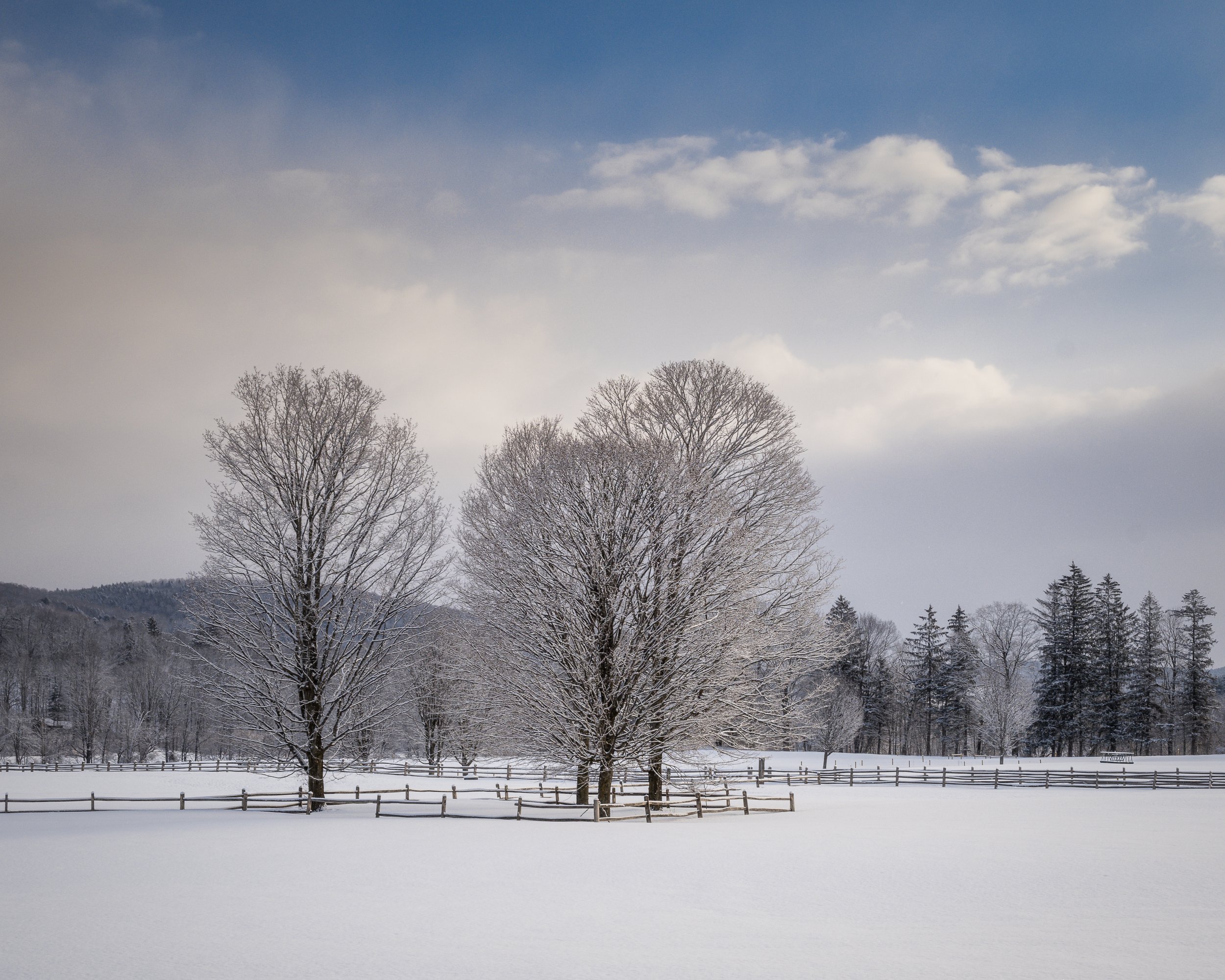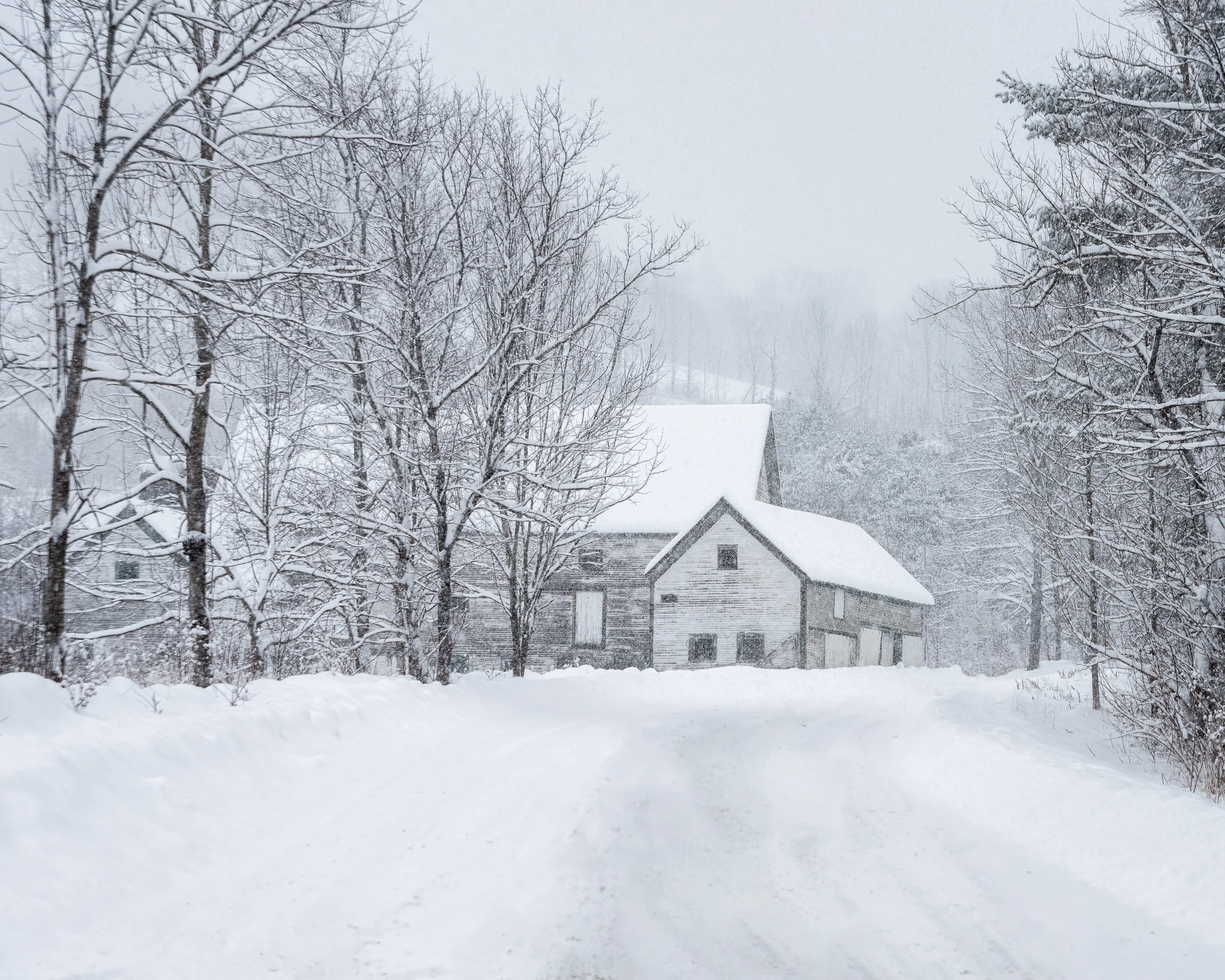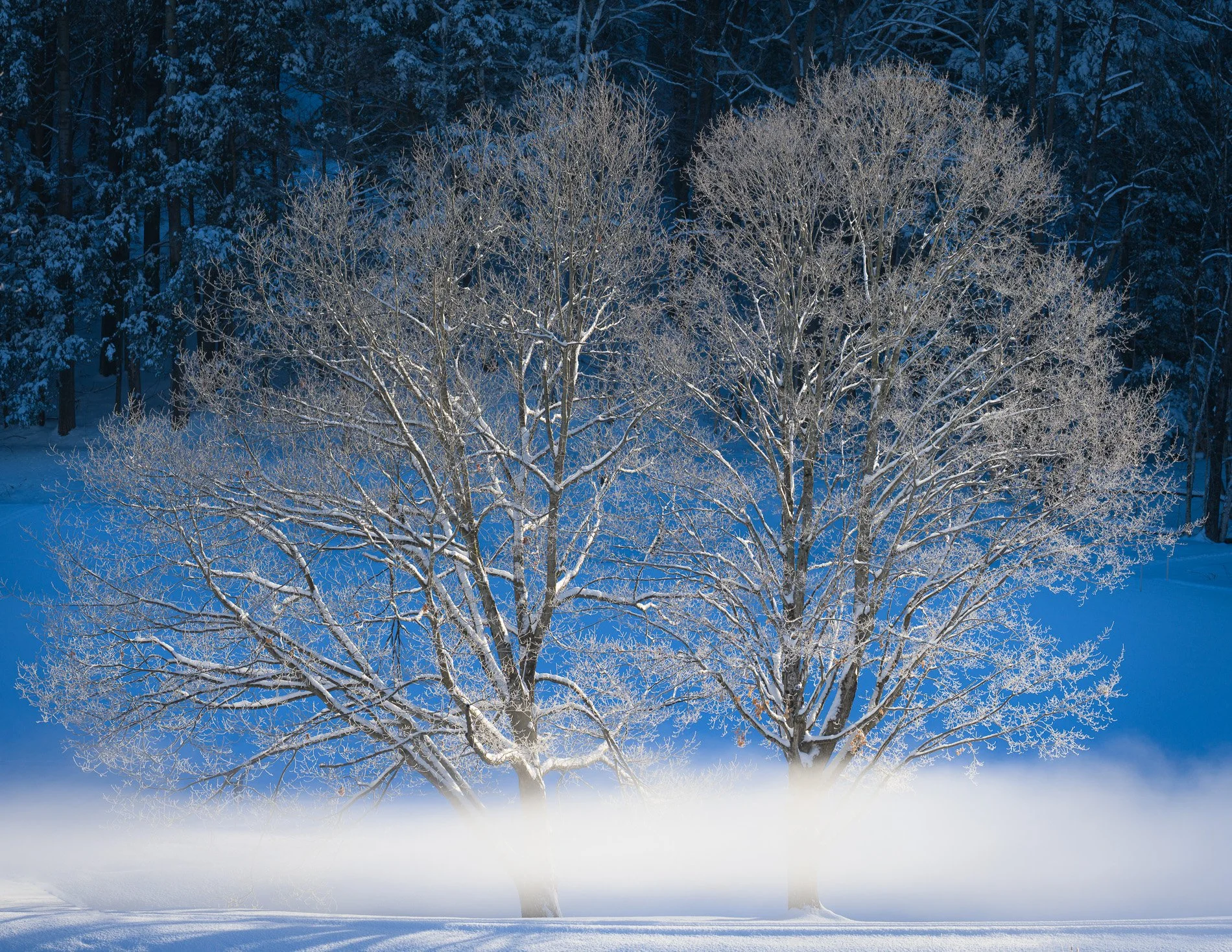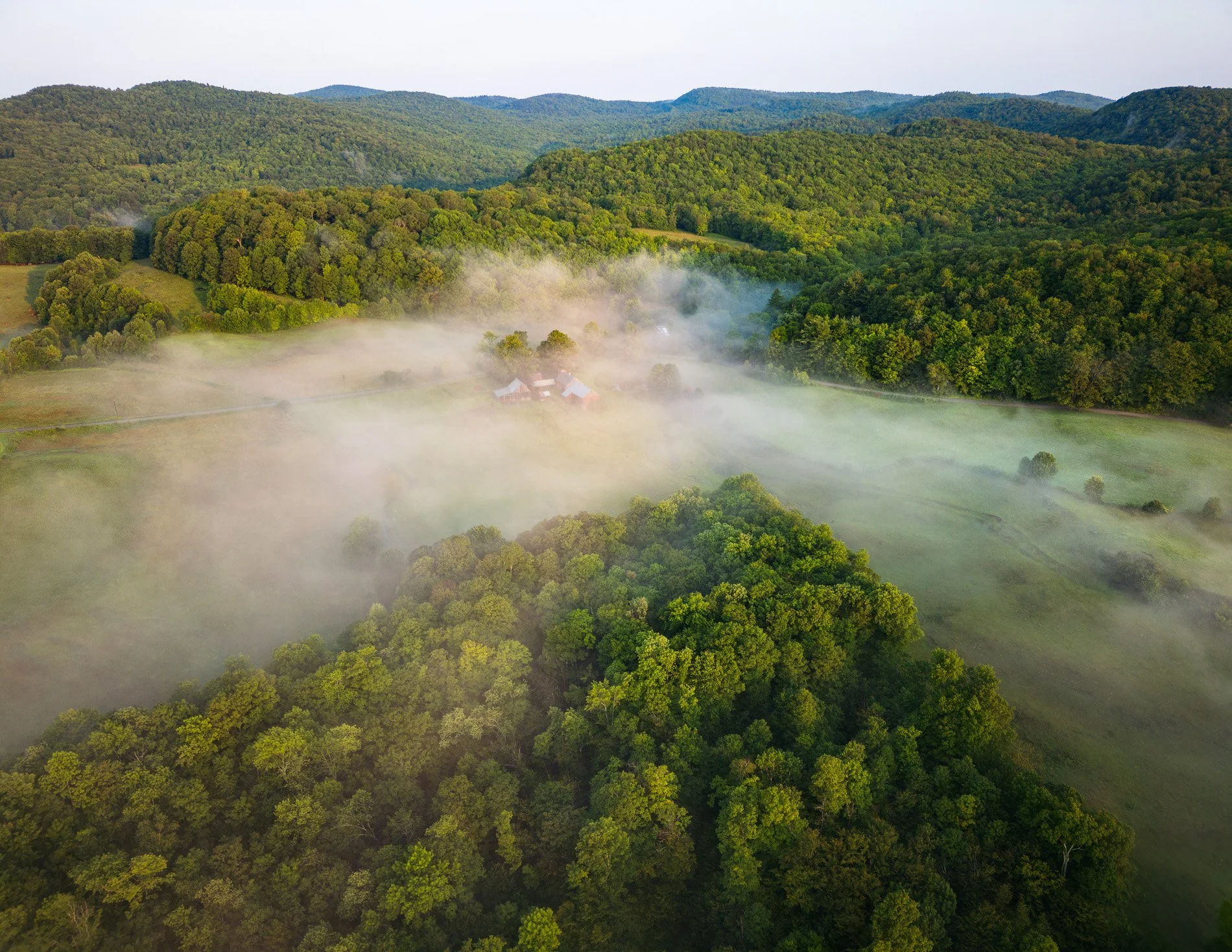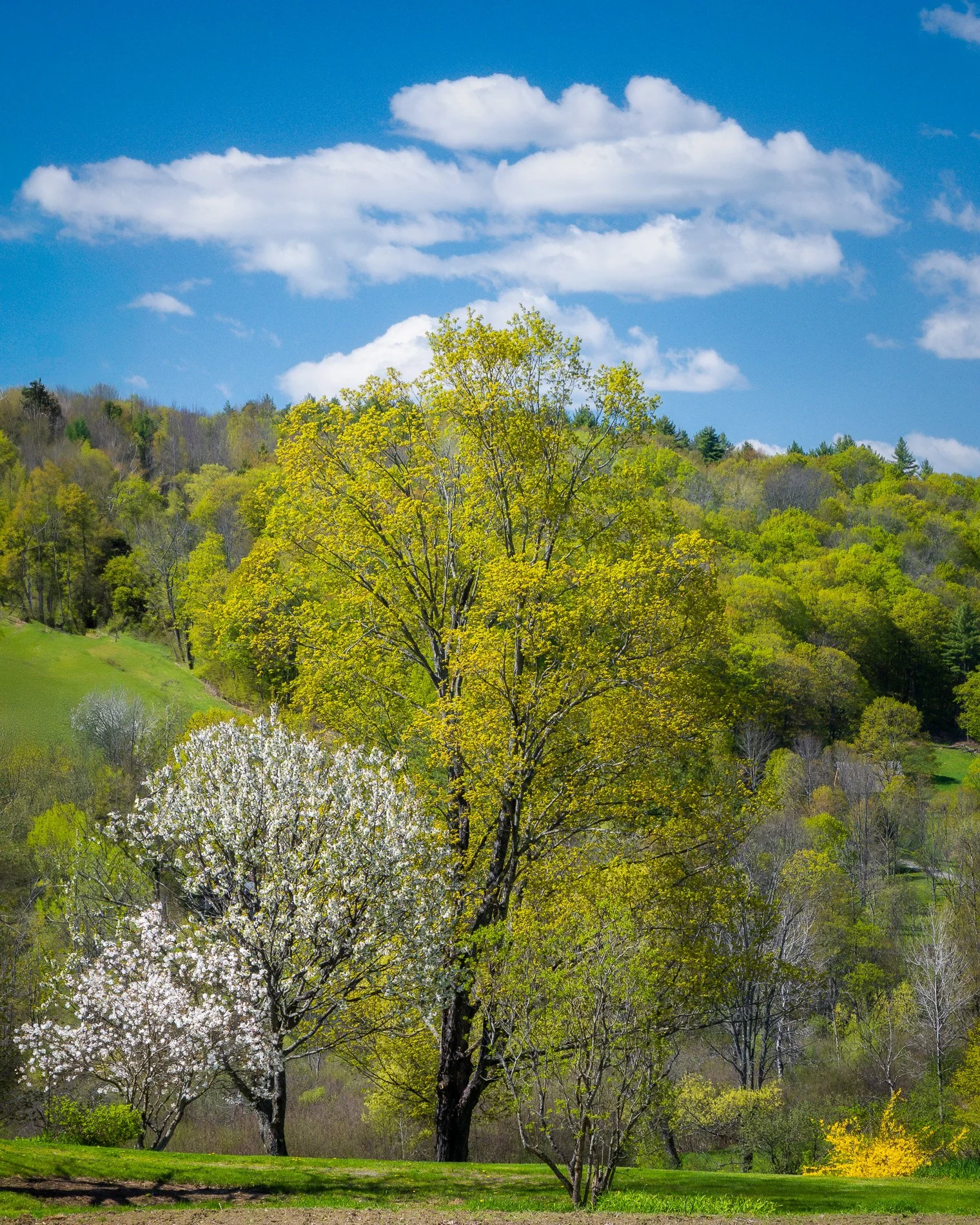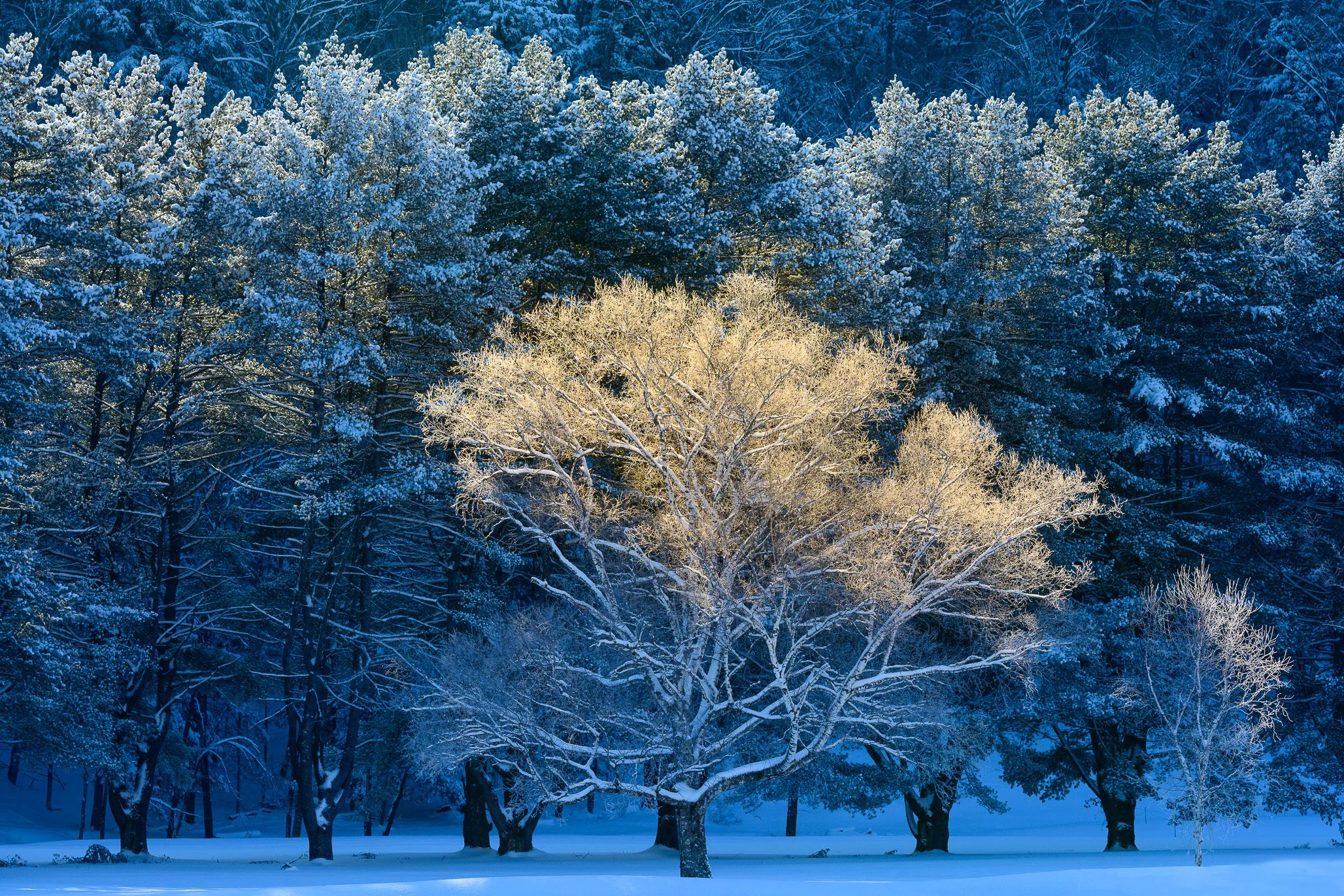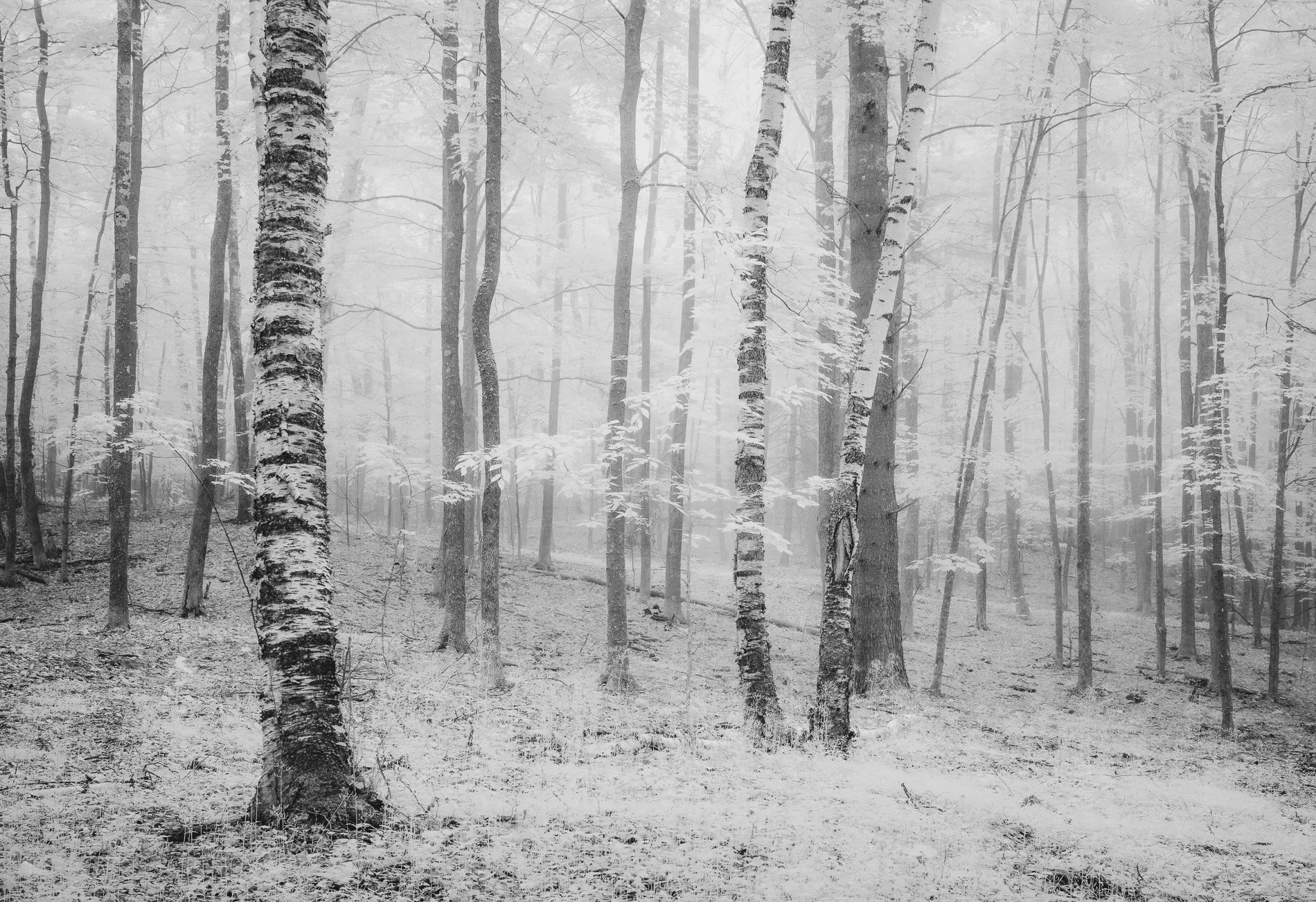Woodstock, A Photographic Journey
Vermont is known for many things: Mountains, Farms, Cows, Covered Bridges, and Maple Syrup, to name a few. These things attract visitors from the northeast US and the globe. Although less talked about, this Vermont town is the glue that binds everything and truly draws visitors to the State. Within Vermont's borders are 251 towns and villages. These towns make up the heartbeat of the State. They are where the residents live and work, where the charm that attracts visitors is created and housed. If you wish to view a complete list of all 251 towns, click here.
To a visitor, many of these towns may seem similar. A quick drive through most reveals a tree-lined green at the town center, a white-clappered meeting house and/or church, maybe a covered bridge or two. Some towns are known for a particular activity or attraction, such as a "ski town" or "farm town." While all of these towns are unique in their local population and design, a few stand out for their beauty, history, tourist appeal, and location. Towns such as Manchester, Stowe, Woodstock, and Middlebury fit that description. I want to talk about my favorite - Woodstock.
Almost every state in the US has a town named Woodstock, with New York being the most famous. Vermont's version is a quintessential Vermont town featuring a covered bridge, a picturesque green, a quaint village for dining and shopping, and plenty of historic country inns for comfortable lodging. Everything is placed in the correct location, and those looking for laid-back country living will be satisfied. These items just scratch the surface, with a big payoff for those willing to do a little exploring Woodstock, and its surrounding area makes for an excellent photographic experience.
The town of Woodstock and the village that sits at its center were founded in 1761. It quickly became a popular location for entrepreneurs, artisans, and manufacturers, and became one of Vermont's largest towns. The population declined throughout the mid-1800s until the advent of the railroad helped the town rebound. Woodstock became a popular stopover for those traveling between Albany, New York, and Boston. Woodstock's recent history includes the Rockefeller family, the Western railroad, and Billing's family. American Scholar George Perkins Marsh gave birth to the conservationist movement with Man and Nature's publication in 1864. Woodstock strives to honor its heritage by embracing its past.
Woodstock is home to Vermont's only National Park. The Marsh-Billings-Rockefeller Historical National Park sits on the north end of town and is an excellent place to start a photographic journey. The park consists of 550 acres of forest, including Mt. Tom, which offers complete 360-degree views of Woodstock from its summit. The hikes are not strenuous and can be done in a few hours. Mt. Tom provides excellent views of the leaves in autumn. This historic park represents Vermont on the 2020 US currency quarter. Woodstock's town green sits in the middle of the main street between west-bound and east-bound traffic. The green offers an excellent view of the town's most popular covered bridge - the middle bridge. The bridge is not old but offers excellent compositions with plenty of foregrounds and Mt. Tom in the background. Suppose you are into old architecture, the buildings in town date back to the town's beginning. If flower photography is your thing, the Eshqua Bog Natural Area is a five-minute ride from the town center in the surrounding forest. The bog features different flora and an excellent selection of Lady Slippers in mid-June. There is a path and a boardwalk to make hiking and viewing easier. The Woodstock area is home to two of the most photographed farms in the world. A couple of miles north of town, via a country backroad, sits the Sleepy Hollow Farm. This farm has been photographed extensively over the years; however, interest has exploded recently since its discovery by the Instagram crowd. A few miles south of town is the famous Jenne Farm. Jenne Farm is a collection of barns placed perfectly along the rolling hills of South Woodstock. The composition elements all work perfectly as if a photographer had put them there. Even Hollywood has noticed this scene in several movies over the years. Expect lots of company here in Autumn.
The autumn towns of Pomfret, Bridgewater, South Woodstock, Quechee, and Taftsville are not technically in Woodstock's village, but they are considered to be because of their proximity in theory. Pomfret, South Woodstock, and Bridgewater are a vast network of country back roads and should be explored for rural photo compositions. Rolling hillsides, barns, farms, lakes, and streams are accessible and waiting to be photographed. During the Spring and Autumn mornings, mist and fog can enhance these locations. Quechee is just 4 miles away and has many attractions itself. Quechee attracts many photographers and tourists alike. Quechee is home to a gorge often called Vermont's Grand Canyon. It is also home to the headquarters of Simon Pearce Glassworks. Simon Pearce's glassware is sold in big cities worldwide, and you can view (and photograph) the craftsmen at work. Simon Pearce also features a highly rated restaurant on-premises that sits directly over a large waterfall and looks at the Quechee covered bridge.
Woodstock is built for outdoor activities and has plenty of indoor amenities for relaxing. Some of the most popular activities are hiking, biking, fishing, and horseback riding. New York City is roughly a five-hour ride. If you have always wanted to enjoy New England charm, there is no better place to experience it than Woodstock. Below are my ten favorite places to photograph in the Woodstock area, and in what preferred season.
Woodstock Village Green - Winter
Sleepy Hollow Farm - Autumn
Middle Covered Bridge - Spring
Silver Lake - Summer
Summit of Mt. Tom - Autumn
Quechee Waterfalls - Winter
Gold Coast Road (Bridgewater) - Autumn
Eshqua Bog Natural Area - Spring
Cloudland Farm Road
Jenne Farm - Autumn


